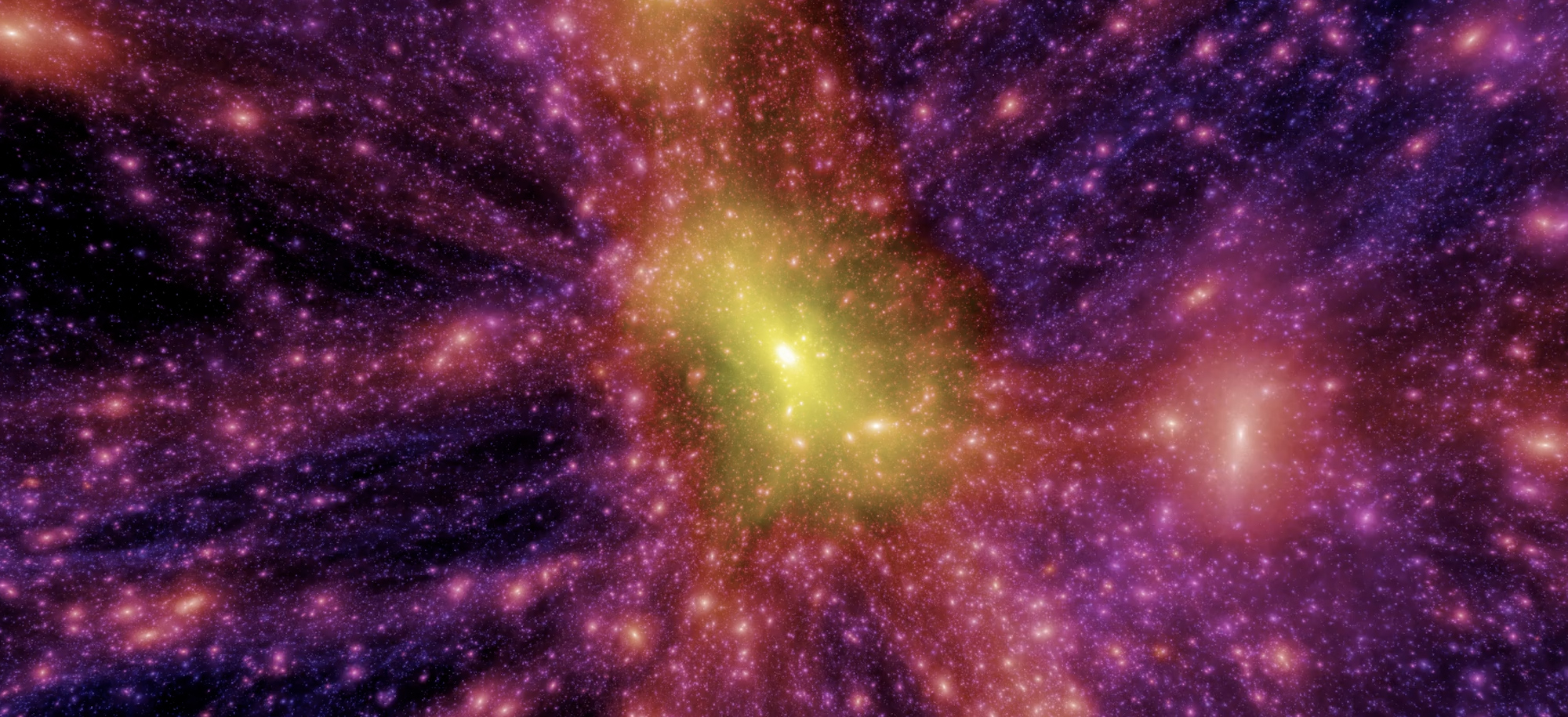Scientists unveil most accurate virtual representation of the Universe

An international team of researchers, including Professor Carlos Frenk, Professor Adrian Jenkins and Dr. John Helly from our Department of Physics, has produced the largest and most accurate computer simulation to date of our local patch of the Universe.
How was the simulation created?
The team used supercomputer simulations to recreate the entire evolution of the cosmos, from the Big Bang to the present, at the Institute for Computational Cosmology here at the University.
The simulation, named SIBELIUS-DARK, is part of the “Simulations Beyond the Local Universe” (SIBELIUS) project, and is the largest and most comprehensive ‘constrained realisation’ simulation to date.
It covers a volume up to a distance 600 million lightyears from Earth and is represented by over 130 billion simulated ‘particles’, requiring many thousands of computers working in tandem over several weeks and producing over one Petabyte of data.
The simulations of our specific patch of Universe feature familiar structures, which include the Virgo, Coma and Perseus clusters of galaxies, the ‘Great Wall’ and the ‘Local Void’, as well as the virtual counterparts of our own Milky Way and our nearby massive neighbour, the Andromeda galaxy.
Analysing the simulations
Referred to as ‘cosmological simulations’, the team used the relevant physics equations to describe how dark matter and cosmic gas evolve throughout the Universe’s lifetime.
They used advanced statistical techniques to make it possible for the simulation to recreate our local cosmic neighbourhood, including the correct locations and properties of virtual analogues of familiar structures.
They found that our local patch of the Universe may be somewhat unusual as the simulation predicted a lower number of galaxies than found in an average region of the Universe due to a local large-scale ‘underdensity’ of dark matter
While the level of this underdensity is not considered to be a challenge to the standard model of cosmology, it could have consequences for how we interpret information from observed galaxy surveys.
The international research team will further analyse the simulation created in the hope to provide further stringent tests of the standard model of cosmology.
Read more:
- Read the findings of the research paper here.
- Find out more about Prof Frenk, Prof Jenkins and Dr Helly.
- Discover more on the Institute for Computational Cosmology
- Interested in studying Physics at Durham University?
Photograph and video credit: Dr Stuart McAlpine.


/prod01/prodbucket01/media/durham-university/departments-/physics/teaching-labs/VT2A9034-1998X733.jpeg)